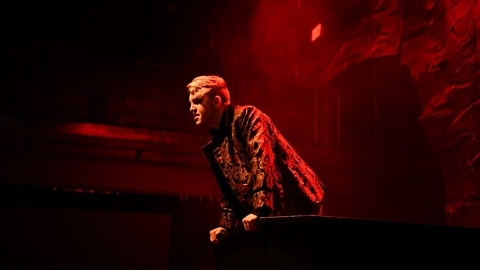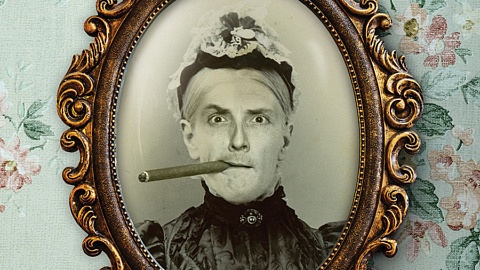Hello theatre creators, educators, scholars and everything in between! I hope you’re having a productive-yet-restful summer. Ever wonder what it’s like...
Far From Stardom: “Peter and the Starcatcher” Misses Its Mark
While DARTcritic Elizabeth is a set of fresh eyes on Peter and the Starcatcher, other DARTcritics have been embedded in the piece throughout its rehearsal process. You can read their pieces here.
Peter Pan may long to stay forever young, but Rick Elice’s Peter and the Starcatcher has some growing up to do. Playing this season at the Shaw Festival’s Royal George Theatre, Starcatcher is exceptional in its quest to push the limits of storytelling, but the story itself needs more attention.
Based on the bestselling series of children’s novels by Dave Barry and Ridley Pearson, Starcatcher is a prequel to J.M. Barrie’s classic Peter Pan. It tells the tale of a nameless orphan boy (Charlie Gallant) who finds an unexpected friend in a spunky young woman, Molly (Kate Besworth). Molly is a “starcatcher”, tasked with preventing the magical matter known as “star stuff” from falling into evil hands. In this Neverland origin story, Molly and the boy – revealed to be the legendary Peter Pan – battle the notorious pirate Black Stache (Martin Happer) and their own fears to discover what it truly means to be a leader.
The commitment of director Jackie Maxwell, movement director Valerie Moore, and designer Julie Bowden to the development of a fantastical theatrical style is evident. What appears to be a simple set of ropes, ladders, and pulleys is home to thousands of creative possibilities, and transitions seamlessly between stage, ship and island jungle. The sophisticated physicality of the piece is complimented by Wayne Barker’s well-crafted musical numbers, directed in this production by Ryan deSouza, resulting in a spectacle capable of wooing and wowing audiences into ovation-al applause. But the spectacle comes at the expense of narrative clarity and socially responsible storytelling.
The play is littered with modern references, which sacrifice contextual reality for a handful of cheap laughs, delivered without subtlety and heavy with mugged expectation. While the use of mimed ‘selfies’, text-speak, and a particularly arbitrary nod to Kelis’ Milkshake had the school groups seated throughout the theatre in stitches, these gimmicks distract from the visual and physical artistry present. Jarring the audience back to modernity timestamps the piece, which is limiting and destructive to the imaginative realm the production attempts to invite the audience into. The destruction doesn’t end there. While the portrayal of indigenous island people has been modified from the original Peter Pan, the updated natives of Mollusk Island are a horrifyingly humorous Italian caricature, still managing a disturbing amount of cultural appropriation through their pasta-inspired tribal appearance and antics.
Nevertheless, Starcatcher is entertaining despite its flaws, and pushes theatrical sensory experience to its limits. I would urge the festival to consider how producing theatre that acknowledges its own preference for “method over material” complies with their mandate to provocatively explore society and celebrate humanity. Molly states, “It’s supposed to hurt; that’s how you know it meant something.” I’m not confident this production meant anything.
Related Posts
For nearly two years, theatre lovers have felt entrapped in their own little purgatories. Artists have been unable to perform on stages, and audiences been...
Frances Johnson graduated from the Department of Dramatic Arts in 2020 and was about to begin an internship at the Shaw Festival when the Covid-19 pandemic...
For nearly two years, theatre lovers have felt entrapped in their own little purgatories. Artists have been unable to perform on stages, and audiences been...
Frances Johnson graduated from the Department of Dramatic Arts in 2020 and was about to begin an internship at the Shaw Festival when the Covid-19 pandemic...
Leave a Reply (Cancel Reply)
Twitter Feed
Blogroll
DARTcritics.com is partially funded by the Marilyn I. Walker School of Fine and Performing Arts, in support of student learning; experiential education; student professionalization; public engagement with the teaching, learning and production activities of the Department of Dramatic Arts; new ways of thinking; and the nurturing of links with our communities.





